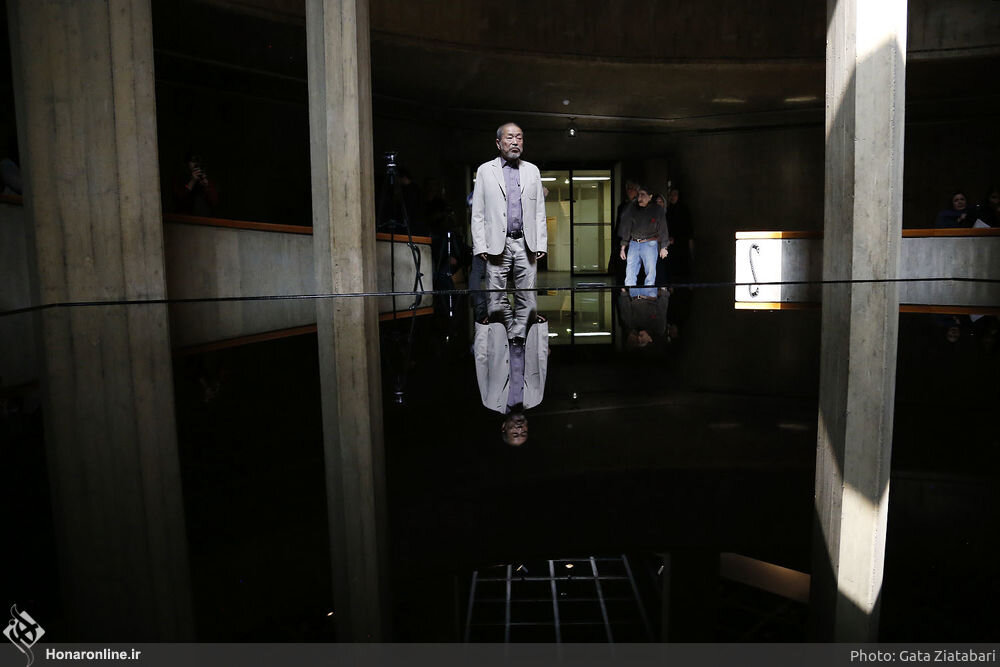Japanese artist Noriyuki Haraguchi, creator of Tehran museum’s “Oil Pool”, dies at 74

TEHRAN – Japanese artist Noriyuki Haraguchi, whose sculpture “Oil Pool” is on display at the Tehran Museum of Contemporary Art (TMCA), has died at 74, TMCA director Ehsan Aqai has said on Thursday.
“Oil Pool” was exhibited to great acclaim at “Documenta 6” in the German city of Kassel in 1977 and was soon afterwards acquired by the TMCA, where it remains installed to this day.
Haraguchi visited “Oil Pool” at the museum in October 2017 at an invitation of the TMCA to carry out the restoration of the artwork. He expressed his hope that the museum would preserve the artwork for many years to come.
He also held a meeting with the then TMCA director Ali-Mohammad Zare’ and noted that the culture of Iran and Japan enjoy a common perspective that causes the museum to keep the artwork.
Zare’ also expressed happiness over the artist’s visit to the museum and said that the restoration would help the sculpture remain at the museum for a long time.
Haraguchi’s trip to Iran to restore the sculpture inspired Iranian filmmaker Hooman Zarif to make the documentary “In Search of Lost Time” that studies the 40-year history of “Oil Pool”.
Composers Alan Kushan and Peyman Khazani, narrator Nader Daahi and artist Farhang Baqai collaborated on the project.
Haraguchi’s career started in the late 1960s when he joined the group of 20th-century Japanese artists called “Mono-ha”.
“Mono-ha” (“School of Things”) was a pioneering art movement that emerged in Tokyo in the mid-1960s whose artists, instead of making traditional representational artworks, explored materials and their properties in reaction to what they saw as ruthless development and industrialization in Japan.
Their work was stridently anti-modernist: primarily sculptures and installations that incorporated basic materials such as rocks, sand, wood, cotton, glass and metal, often in simple arrangements with minimal artistic intervention.
More experiential than visual, “Mono-ha” works tended to demand patience and reflection. Many were also ephemeral.
Photo: Japanese artist Noriyuki Haraguchi glances at his sculpture “Oil Pool” on display at the Tehran Museum of Contemporary Art (TMCA) on October 21, 2017. (Honaronline/Gata Ziabari)
RM/MMS/YAW
